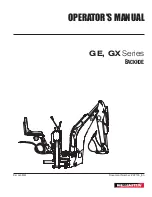
5
General Maintenance
120
5975/5977 Series MSD Operating Manual
3
Loosen the analyzer side plate thumbscrews if they are fastened. (See
.)
The bottom thumbscrew on the analyzer side plate should be unfastened
during normal use. It is only fastened during shipping. The top thumbscrew
on the front side plate should only be fastened if hydrogen or other
flammable or toxic substances are used for carrier gas, or during CI
operation.
4
Gently
swing the side plate out.
CAUTION
In the next step, if you feel resistance,
stop
. Do not try to force the side plate
open. Verify that the MS is vented. Verify that both the front and rear side plate
screws are completely loose.
Figure 34.
The analyzer chamber for an Inert+ model MSD
Ceramic source
board
Ion source
Side plate
Analyzer
















































